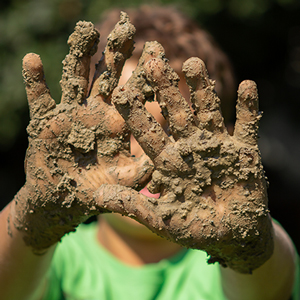The Role of Sensory Play in Preschools
To understand the role of sensory play in preschools, let’s think about a newborn. When a baby is born, its only learning methods are touching, tasting, smelling, seeing, moving, and hearing. A child continues to use these methods to learn about the world throughout early childhood and beyond. In fact, studies show that children (and even adults) learn best when learning engages the senses.
 How Sensory Play in Preschools Shapes Learning and Behavior
How Sensory Play in Preschools Shapes Learning and Behavior
Sensory play helps build nerve connections in the brain’s pathways and refines a child’s threshold for processing sensory information. For example, exploring sounds and noises while playing helps a child to block out noise that is not important. So, instead of being frightened or distracted by a sound, a child can process the noise appropriately.
As a child develops trust and understanding of sensory perceptions, the brain sends out affirming signals. Sensory play literally helps shape what children believe to be positive or safe. Ultimately, this shapes the choices children make and how they behave.
Ooey-Gooey Week at The Academy
Remember mud pies and slimy spaghetti “guts” at Halloween parties? Making those memories (and nerve connections) is the purpose of Ooey Gooey Week. We usually kick off the week with our Annual Mud Day and follow up with Slime Day. What a blast the kids have on those days!!
Playing with Oobleck is also a favorite activity. Oobleck’s a mesmerizing material that sometimes acts like a solid and sometimes like a liquid. It’s also safe because it’s just made from water and cornstarch.
For the best in preschools Nashville has to offer, consider The Academy with 11 convenient locations. Request information or make an appointment to visit.
*The name comes from the Dr. Seuss book, Bartholomew and the Oobleck.

